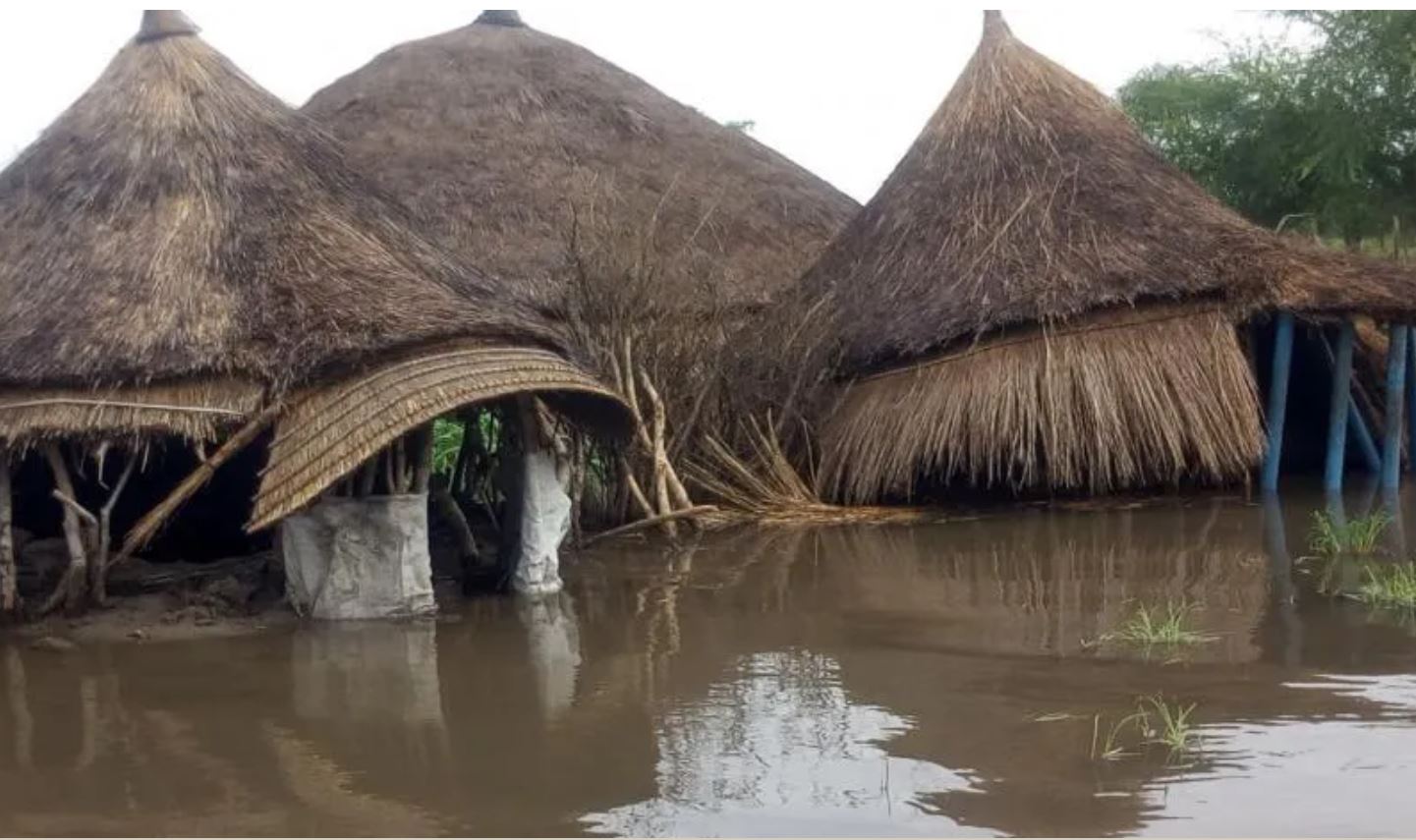Hundreds of thousands of children and their families – many of whom were already facing extreme malnutrition – have been displaced by heavy rainfall and are now living in temporary, makeshift settlements across South Sudan.
Save the Children is deeply concerned for the health of more than 420,000 people, including at least 200,000 children, who have been forced to flee their homes in the extraordinary and heavy rains and flooding that have battered the country since they began in July[1]. In total an estimated over 900,000 people – or 7% of the population of South Sudan – have been affected by the floods, which includes those displaced, those who have lost farmland and those who are cut off by floodwaters[2]. Pibor in Jonglei country and Maban in Upper Nile county are among the worst hit, with data indicating that upstream areas received over 230 percent of the normal amount of rainfall between September and October, with an estimated 425 mm falling compared with the average of just under 200 mm[3].
Flooding has affected more than 30 counties in Jonglei, Upper Nile, Warrap, Northern Bahr el Ghazal, Unity, Lakes, Central, and Eastern Equatoria. An estimated 60 percent of people living in affected counties already faced extreme levels of malnutrition before the rains[4]. Life-saving assistance has been suspended in some flooded areas, with 42 nutrition centers impacted by the floods[5]. This is likely to compound the existing severe acute malnutrition faced by thousands of families if they do not receive timely medical treatment.
Save the Children is particularly concerned about children who may have become separated from their families, placing them at increased risks. In the panic to leave, many households have lost documentation including birth certificates which could prevent them from accessing vital services in the future.
More rain is predicted in the coming weeks. While seasonal flooding during the rainy season in South Sudan is common, the current flood situation is worse than recent previous years, with displacements dramatically higher[6]. Weather patterns in the Indian Ocean are thought to be a contributing factor to the extreme conditions, with a greater-than-average increase in temperatures of the sea surface in the western part of the ocean leading to increased rainfall inland in Eastern Africa.
Save the Children’s Country Director in South Sudan, Rama Hansraj said:
“The floods in South Sudan have reached a crisis point and children and their families are in urgent need of support. The floods are forcing people out of their homes to higher ground, where they are now seeking shelter wherever they can find it. The communities affected are already some of the most vulnerable in the country.
«Save the Children welcomes the Government of South Sudan’s declaration of the state of emergency in response to the current floods and urges the government to support this commitment by releasing funds immediately to support the response. We also call on the government of South Sudan to ensure that humanitarian access is supported so that those most at risk– in particular, children – can be urgently reached and protected.
«Save the Children is calling on the international community to commit financial and other resources toward the response efforts to support vulnerable children and their families.”
Save the Children is responding to the floods in Abeyi and Akobo West, where a population of 40,140 in the three counties (Rumamer, Mijak, and Abyei) have been identified as without any access to essential health, sanitation, water or nutrition services.
Save the Children is working with the Government and local partners to target 2,400 households in need of distributions of essential items like emergency shelters and hygiene kits.
[1] UNOCHA South Sudan Seasonal Flooding Update 5 November 2019 https://reliefweb.int/sites/reliefweb.int/files/resources/ss_20191105_south_sudan_seasonal_flooding_update_3.pdf [2] IOM https://www.iom.int/news/iom-responding-south-sudan-floods-affecting-900000-people [3] UNHCR https://www.unhcr.org/news/briefing/2019/10/5da977fe4/unprecedented-flooding-affects-thousands-locals-refugees-south-sudan.html [4] UNOCHA Estimate October 2019 https://www.humanitarianresponse.info/sites/www.humanitarianresponse.info/files/documents/files/20191025_press_release_south_sudan_floods.pdf [5] UNICEF https://www.unicef.org/press-releases/490000-children-affected-devastating-floods-south-sudan [6] By September 2018 the rainy season in South Sudan produced lower than average rains, leading to water and food stress for communities http://fews.net/east-africa/seasonal-monitor/september-10-2018; in September 2017, the number of people affected was estimated at 11,000 https://reliefweb.int/disaster/fl-2017-000137-ssd


